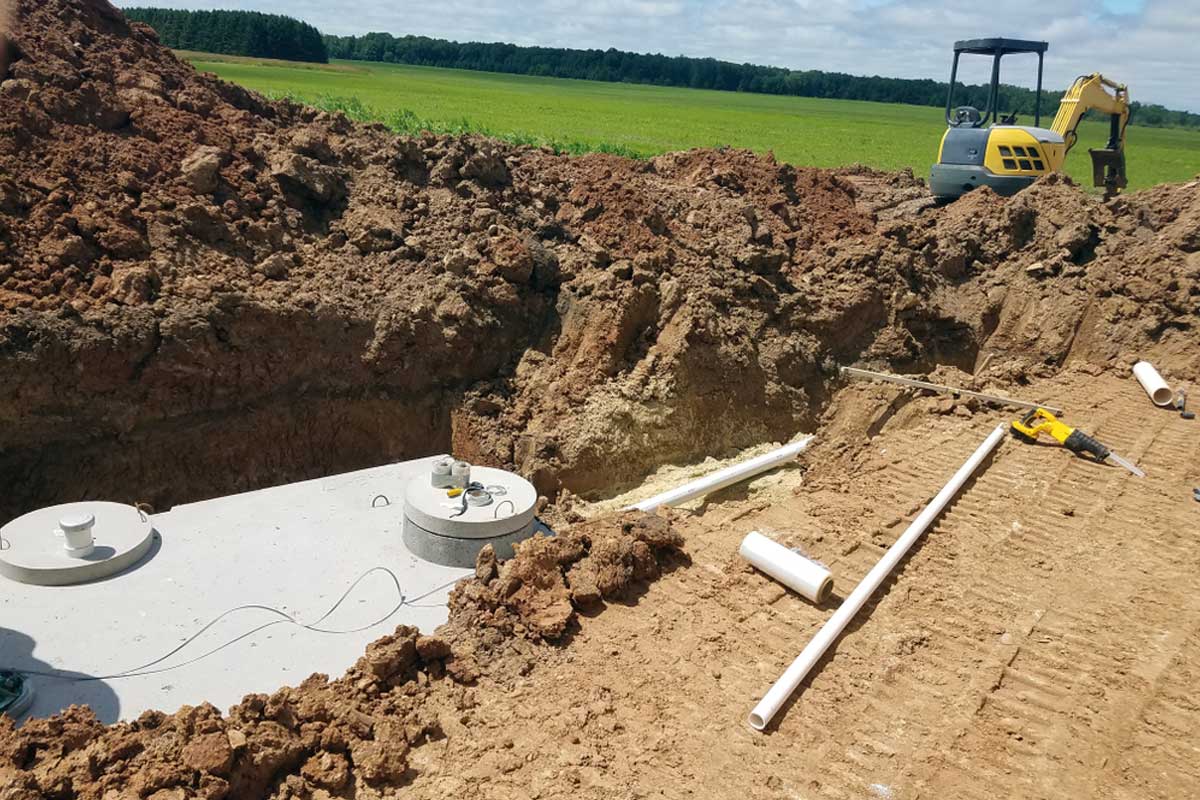When it comes down to homeownership, certain aspects tend to remain hidden from the eye until they call for attention. Septic systems are one of the most important, yet often ignored elements of a house. We often ignore it and assume that it can perform its tasks without worry or maintenance. Like all systems, have a limited time span of operation and have to be replaced over time.

Unprepared homeowners may be unable to pay for the cost of replacing a septic tank. The total amount is determined by several factors, so it’s important to set aside money for a new system.
To determine the cost of an upgrade to a septic tank, it’s crucial to think about more than just the cost. It’s not simply a matter of removing the tank that was in use and installing an entirely new one. Instead, multiple components and services make up the overall expense. Every step, from getting permits, to hiring experts as well as excavation and installation incurs costs. Homeowners should plan their budgets accordingly.
The cost of septic tanks, leach fields and installation are all significant aspects to take into consideration. The cost of a new tank will vary based on the dimensions and material of the tank, and the difficulty of installation. Furthermore, the location of your property, local regulations, and soil conditions are also factors that can affect the cost. It is crucial to talk with experts from the septic system who can evaluate your specific needs and give you an accurate estimate. They’ll take into consideration elements like the dimensions and layout of your leach field, ensuring a comprehensive understanding of the total expense with your replacement septic system project.
The leach or drain field is an additional expense. This component is crucial in the treatment and dispersal of water. Costs for replacing a field that is damaged or not functioning can be considerably increased through meticulous planning. Factors like the size of the field soil composition and accessibility all influence the cost, which is why it’s important to consider these factors when making a calculation of the cost total.
homeowners should consider the cost that will be incurred by replacing the tank for septic. This process may disrupt your routine, requiring that you leave your home, or restrict the use of water while installation process is underway. You should factor in these issues when planning your project since they may affect your routine and cause additional costs like accommodation or modifications to your schedule.
It is equally important to understand that proper maintenance and care of your septic systems is necessary to extend their lifespan and reduce the risk of premature replacement. By not taking care of regular maintenance, it can cause more severe issues in the future like tank failure or damage to the drainfield. Making a budget for septic maintenance is a smart investment and will save you money over time.
By now, you may have realized that determining the septic system cost is not a straightforward task. This requires careful evaluation of numerous factors such as the size and nature of tank to the difficulty installing it as well as the condition and state of the leachfield. The place of your house as well as the local regulations can impact the cost. It is important to consult professionals who are experienced in replacing septic systems.
If you’re thinking about replacing your septic system, you could be pleasantly surprised to learn there’s hidden expenses that you hadn’t anticipated. These expenses can add up quickly, which is why it’s crucial to be aware of them prior to making a choice.
Some of the hidden expenses associated with a new septic system are:
The cost of inspections and permits. Your local government will require permits before you begin the work of replacing your sewer systems. These permits are likely to be costly and you may need to pay additional for inspections.
The cost of excavation and removal. Before the new system can be installed, it will be necessary to remove and excavate the old system. This can be a costly process, especially if the system is located in an extremely difficult to access location.
The expense of backfilling and grading. When the old system is removed, it will be needed to grade and then backfill the hole. This is crucial to ensure that the new system is draining.
Costs of landscaping. When the new system is installed, it is possible that you will need for landscaping work to keep the area looking neat and tidy. It can be costly especially if a landscaper required.
When planning the replacement of your Septic tank, it’s essential to consider these cost-savings that aren’t obvious. It is possible to avoid unpleasant surprises in the near future by creating a plan in advance.
Eco-friendly septic systems can be a fantastic option for homeowners with an unfinancially tight budget. Not only are they cost-effective alternatives to conventional septic systems, but they also assist in preserving the environment by minimizing runoff and reducing the amount of water pollution. Eco-friendly systems for septic are becoming more affordable and accessible making them the ideal option for those seeking to lessen the impact on the environment of their home, without going broke. While there might be upfront costs to switching to a green system, these additional costs are more than compensated for in long-term savings. Green living isn’t only a trend, it’s an essential choice in lifestyle that every person should consider if they care about the future of our world. It gives you peace of peace of mind knowing that you’re doing your part in helping the global community. This will also ensure that your home is functioning efficiently with less maintenance and lower costs per month.
